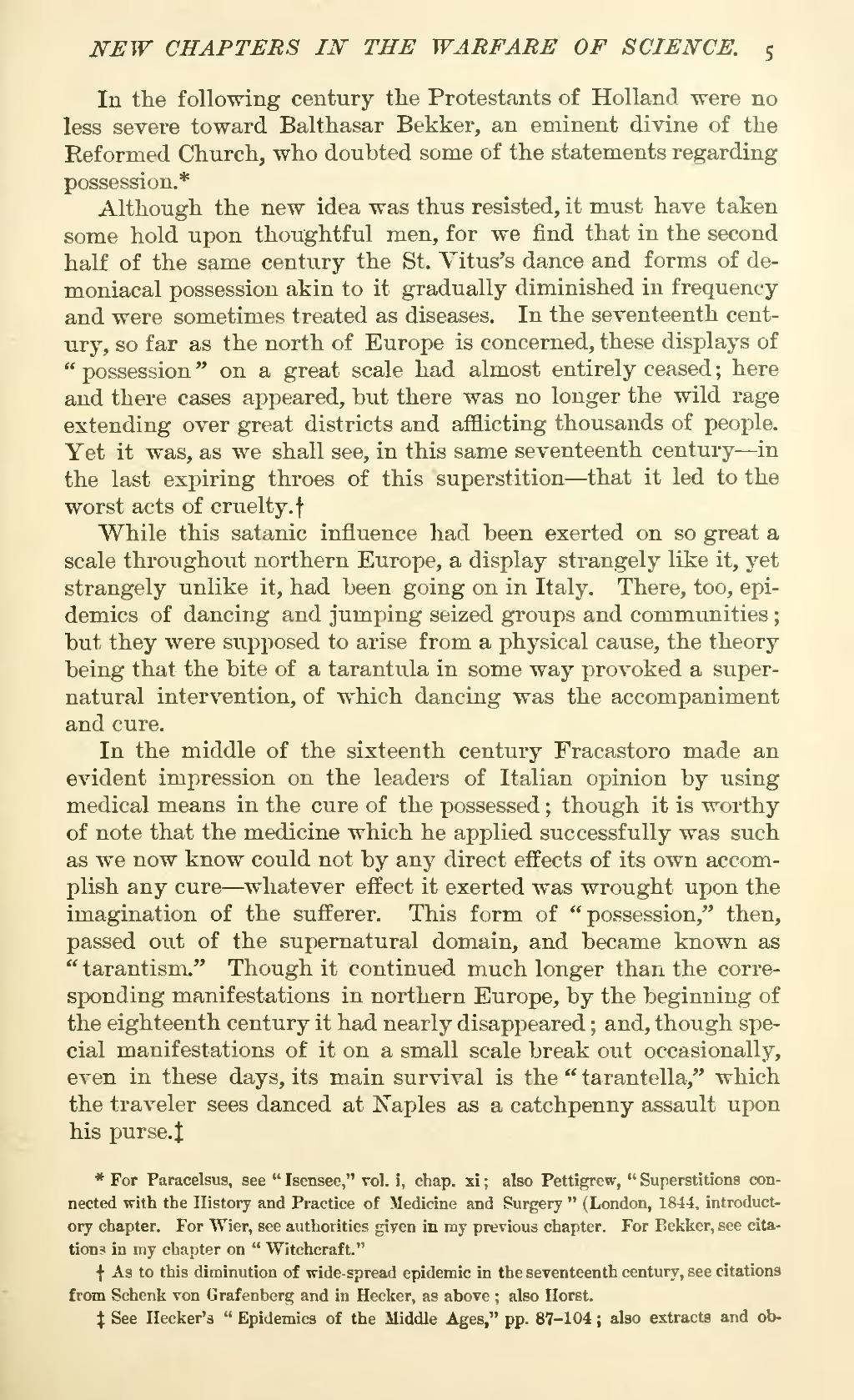In the following century the Protestants of Holland were no less severe toward Balthasar Bekker, an eminent divine of the Reformed Church, who doubted some of the statements regarding possession.[1]
Although the new idea was thus resisted, it must have taken some hold upon thoughtful men, for we find that in the second half of the same century the St. Vitus's dance and forms of demoniacal possession akin to it gradually diminished in frequency and were sometimes treated as diseases. In the seventeenth century, so far as the north of Europe is concerned, these displays of "possession" on a great scale had almost entirely ceased; here and there cases appeared, but there was no longer the wild rage extending over great districts and afflicting thousands of people. Yet it was, as we shall see, in this same seventeenth century—in the last expiring throes of this superstition—that it led to the worst acts of cruelty.[2]
While this satanic influence had been exerted on so great a scale throughout northern Europe, a display strangely like it, yet strangely unlike it, had been going on in Italy. There, too, epidemics of dancing and jumping seized groups and communities; but they were supposed to arise from a physical cause, the theory being that the bite of a tarantula in some way provoked a supernatural intervention, of which dancing was the accompaniment and cure.
In the middle of the sixteenth century Fracastoro made an evident impression on the leaders of Italian opinion by using medical means in the cure of the possessed; though it is worthy of note that the medicine which he applied successfully was such as we now know could not by any direct effects of its own accomplish any cure—whatever effect it exerted was wrought upon the imagination of the sufferer. This form of "possession," then, passed out of the supernatural domain, and became known as "tarantism." Though it continued much longer than the corresponding manifestations in northern Europe, by the beginning of the eighteenth century it had nearly disappeared; and, though special manifestations of it on a small scale break out occasionally, even in these days, its main survival is the "tarantella," which the traveler sees danced at Naples as a catchpenny assault upon his purse.[3]
- ↑ For Paracelsus, see "Isensee," vol. i, chap, xi; also Pettigrew, "Superstitions connected with the History and Practice of Medicine and Surgery" (London, 1844, introductory chapter. For Wier, see authorities given in my previous chapter. For Bekker, see citations in my chapter on "Witchcraft."
- ↑ As to this diminution of wide-spread epidemic in the seventeenth century, see citations from Schenk von Grafenberg and in Hecker, as above; also Horst.
- ↑ See Hecker's "Epidemics of the Middle Ages," pp. 87-104; also extracts and ob-
